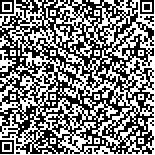本文已被:浏览 513次 下载 331次
Received:July 20, 2023 Published Online:December 20, 2023
Received:July 20, 2023 Published Online:December 20, 2023
中文摘要: 目的 分析G2、A2/3期糖尿病肾脏疾病(DKD)患者胰岛素抵抗(IR)相关指标与中医证候特征的依存性,探寻DKD(G2,A2/3期)患者中医辨证规律。
方法采用回顾性研究方法,收集2015年1月至2016年12月南京鼓楼医院收治的98例DKD(G2,A2/3期)患者,观察其一般临床指标、中医证候出现频率和证型分布特征,并检测其IR相关指标,包括空腹血糖(FBG)、空腹胰岛素(FIN)、空腹C肽(FCP)以及稳态模型评估胰岛素抵抗指数(HOMA-IR)。对IR相关指标与中医证候特征进行多因素回归分析。
结果 在98例DKD(G2,A2/3期)患者中,本证包括脾肾气虚证64例、气阴两虚证20例、阴虚燥热证8例、阴阳两虚证6例;标证包含血瘀证42例、痰瘀证10例、湿热证5例、寒湿证1例;复合证型58例,其中脾肾气虚兼血瘀证共28例。与非脾肾气虚证患者相比,脾肾气虚证患者的TG和FIN、FCP、HOMA-IR明显升高,其差异均有统计学意义(P<0.05)。Logistic回归分析显示,中医症状(小便频数或清长、疲乏、纳呆、腰膝酸软)与FBG、FIN升高无相关性(P<0.05)。而具有疲乏症状者FCP升高的概率是没有该症状者的7.661倍(P<0.05)。具有疲乏、小便频数或清长症状者HOMA-IR升高的概率分别是没有该症状者的10.787、5.911倍,差异均有统计学意义(P<0.05)。
结论 DKD(G2,A2/3期)患者主要中医证候特征是脾肾气虚,其临床特点是IR相关指标的不同程度升高;其IR相关指标的异常升高与主要中医证候特征有依存性,可以作为中医辨证的客观证素。
Abstract:Objective To analyze the interdependent relationships between insulin resistance (IR) related indicators and Chinese medicine syndromes in patients with diabetic kidney disease (DKD) of stages G2 and A2/3,and to explore rules of Chinese medicine syndromes differentiation in patients with DKD (stages G2 and A2/3).
Methods A total of 98 patients with DKD (stages G2 and A2/3) admitted to Nanjing Drum Tower Hospital from January 2015 to December 2016 were retrospective analyzed. The general clinical indexes, the frequency of Chinese medicine syndromes and the distribution of Chinese medicine syndromes type were investigated. Furthermore, IR related indicators including fast blood glucose (FBG), fast insulin (FIN), fast C-Peptide (FCP) and homeostatic model assessment of insulin resistance (HOMA-IR) were examined, respectively. And then, the multivariate regression analysis of IR related indicators and Chinese medicine syndromes was performed.
Results Among 98 patients with DKD (stage G2, A2/3), root cause syndrome included 64 cases of spleen-kidney Qi deficiency syndrome, 20 cases of deficiency of both Qi and Yin syndrome, 8 cases of Yin deficiency dryness-heat syndrome, and 6 cases of deficiency of both Yin and Yang syndrome. The clinical manifestation syndrome included 42 cases of blood stasis syndrome, 10 cases of phlegm stasis syndrome, 5 cases of damp-heat syndrome, and 1 case of cold-dampness syndrome. There were 58 cases of complex syndrome types, including 28 cases of spleen-kidney Qi deficiency and blood-stasis syndrome. Compared with non spleen-kidney Qi deficiency syndrome patients, the TG, FIN, FCP and HOMA-IR in patients with spleen-kidney Qi deficiency syndrome were significantly increased (P<0.05). Logistic regression analysis showed that there was no correlation between Chinese medicine symptoms (frequent or clear urination, fatigue, numbness, and soreness in the waist and knees) and elevated FBG and FIN(P>0.05). For those with fatigue symptom, the probability of FCP elevation was 7.661 times higher than those without this symptom (P<0.05). For those with fatigue symptom and frequent or clear urination symptom, the probability of HOMA-IR elevation was 10.787 and 5.911 times higher than those without the symptom, respectively (P<0.05).
Conclusion The main Chinese medicine syndrome feature of DKD(G2,A2/3)patients is spleen and kidney Qi deiciency, and its clinical feature is the different degrees of increase in IR related indicators. The increases in IR related indicators have the interdependent relationships with the main Chinese medicine syndromes, and can be considered as the objective syndrome factors of Chinese medicine syndrome differentiation.
keywords: Diabetic kidney disease Insulin resistance Chinese medicine syndromes spleen-kidney Qi deficiency syndrome Bloodstasis syndrome Fasting C-Peptide Fatigue
文章编号: 中图分类号:R587.2 R241 文献标志码:A
基金项目:江苏省中医药科技发展计划面上项目(2023061);南京市卫生科技发展专项资金项目(YKK20085) ;南京市中医药青年人才培养计划(ZYQ20066);南京中医药大学自然科学基金项目(XZR2020054);南京大学中国医院改革发展研究院面上课题(NDYGN2023004)
引用文本:
